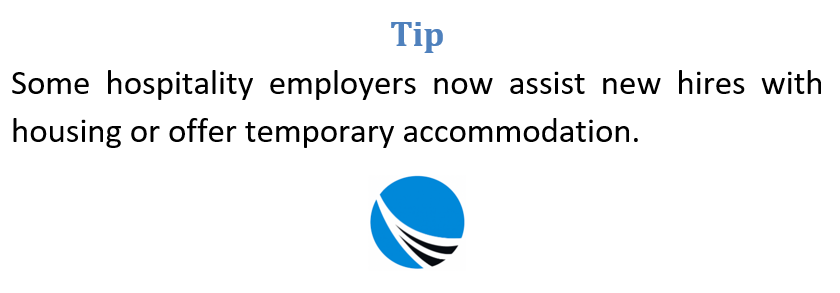Staffing challenges are a long-standing issue in the hospitality industry, but in recent years the situation has become more acute. From high turnover rates to a shrinking pool of available workers, hospitality businesses are facing mounting pressure to maintain adequate staffing levels. This has forced some venues to cut back operating hours or close on certain days simply because they lack the personnel to serve customers.
However, despite these difficulties, businesses can still find and keep great people. By taking creative, proactive steps and putting employees at the center of operations, hospitality companies can build loyal teams that support long-term success.

Understanding the Core Challenges of Hospitality Recruitment
Several underlying issues have made hospitality staffing more difficult in recent times. Chief among these is the rising cost of living, which includes skyrocketing rent prices and an overall housing shortage in many urban areas. This affects not only potential hires but also existing employees who may struggle to find or keep housing near their workplace.
In areas where tourism thrives, the competition for accommodation can push hospitality workers further away from city centers, increasing commuting difficulties and contributing to burnout or resignation.
Employers are now recognizing that housing insecurity can influence recruitment outcomes. Some businesses even go so far as to assist new hires in their housing search or provide temporary lodging arrangements. In certain cases, team members may accompany foreign recruits to rental interviews to boost their chances.
All of this illustrates how the recruitment conversation has expanded. It’s no longer just about skills and availability—external living conditions can have a direct impact on employee stability and performance.
Innovating the Hiring Process to Find the Right Talent
With a limited talent pool, hospitality employers must be flexible and imaginative in how they recruit. Traditional job advertisements and rigid role descriptions may no longer yield sufficient interest.
One way forward is to tailor opportunities to different lifestyle needs. For example, offering shifts that align with school hours can attract parents who are looking for part-time work. Scheduling weekend-only roles may also appeal to students or people looking to supplement their income.
Another often overlooked group includes retirees who wish to stay active professionally but on a lighter schedule. These individuals bring a wealth of experience and reliability and can help stabilize teams during peak seasons.
Employers can also hold informal recruitment events where interested candidates are invited for casual conversations rather than structured interviews. Even when roles aren’t immediately available, having a pool of potential hires makes it easier to fill future vacancies with minimal disruption.
Building a talent pipeline this way—rather than hiring reactively—can lead to better matches and longer employee tenure.
Practical Tools to Improve Your Hiring Outcomes
For hospitality businesses looking for practical guidance, online resources can provide excellent support. Career portals dedicated to tourism and service industries often offer recruitment toolkits complete with templates, advertising copy, digital assets, and sample interview questions.
These toolkits help employers position their roles more effectively and tailor messaging to specific demographics. For instance, print ads and radio placements might work better for older candidates, while social media platforms such as TikTok, YouTube, and Instagram are more effective when targeting students or younger job seekers.
There are also useful strategies to amplify your reach organically. Encouraging staff to update their LinkedIn profiles to reflect that your business is hiring, or implementing a referral incentive program, can help you tap into trusted networks.
Additionally, onboarding guidance—like checklists and training templates—can be especially helpful for small businesses that may not have a dedicated HR team.
Retaining Your Workforce: How to Keep Good Employees Engaged
Finding new hires is only half the challenge; keeping them on board is equally, if not more, important. The hospitality sector is known for its demanding pace and irregular hours, which can lead to burnout and high turnover if not carefully managed.
Retention requires a multifaceted approach, balancing compensation, career development, workplace culture, and day-to-day working conditions. When employees feel appreciated, respected, and supported, they are far more likely to remain committed to their roles.
Offering More Than Just a Paycheck
Competitive pay is an essential foundation for employee retention. Hospitality workers must feel that their contributions are fairly rewarded. Wages should reflect industry benchmarks and consider the region’s cost of living.
However, financial compensation alone isn’t always enough. Providing additional perks—like complimentary meals during shifts, free access to hotel amenities, or wellness programs—can help enhance overall job satisfaction.
Flexible scheduling options and additional leave days are also appreciated, especially by employees juggling other responsibilities. These benefits can often outweigh a marginal pay increase when it comes to building loyalty.
It’s also important to stay informed on relevant legislation. Laws governing tips, overtime, and gratuities can affect take-home pay, and businesses that ensure compliance and transparency often foster greater trust among staff.

Cultivating a Culture of Recognition
Acknowledgment goes a long way in boosting morale. Simple initiatives like an employee of the month program or thank-you notes for extra effort can make a noticeable difference.
Reward programs don’t have to be costly. Small gestures—gift cards, team outings, or a free day off—can help employees feel appreciated. These programs also encourage healthy competition and reinforce a positive workplace atmosphere.
Staff members who feel seen and acknowledged are more likely to maintain high performance and remain with the company.
Focusing on Development and Career Pathways
Hospitality is often viewed as a temporary job, especially by students or part-time workers. But for many, it’s a long-term career. Providing clear pathways for advancement can help transform short-term roles into fulfilling, long-term careers.
Offering mentorship, job shadowing, or internal training programs can help employees grow their skills and advance into supervisory or management roles.
If your budget allows, consider offering education subsidies for courses related to hospitality or customer service. Alternatively, connect employees with free online training modules provided by tourism and industry organizations.
Investing in employee development not only improves their performance but also demonstrates that you’re committed to their future.
Building a Supportive and Transparent Workplace
Open communication and trust are cornerstones of effective team management. Hospitality teams operate best when everyone feels safe to voice concerns and contribute ideas.
Create opportunities for feedback and listen actively to your staff. If they suggest a new approach that improves efficiency or customer experience, act on it. Implementing employee-driven changes fosters a sense of ownership.
Equally important is ensuring that your expectations are clear while giving team members autonomy. Micromanaging erodes confidence, while empowering employees builds trust and job satisfaction.
Workplaces that promote mutual respect and inclusion tend to experience lower staff turnover and stronger team dynamics.
Leveraging Digital Tools for Engagement and Efficiency
Technology can enhance the employee experience by reducing administrative burden and streamlining internal communication. HR software, for instance, enables businesses to manage schedules, payroll, leave requests, and performance evaluations more easily.
Some platforms also include mobile apps that allow staff to view shift schedules, submit time-off requests, and access training resources—all from their phones. This convenience empowers employees and makes them feel more in control of their work-life balance.
Data insights from HR systems can also inform decisions around hiring, training, and retention strategies. By tracking engagement metrics or analyzing exit interview feedback, employers can continuously refine their employee experience.
Digital tools don’t replace human leadership—but they do support it by improving consistency, reducing friction, and enabling more informed management decisions.
Conclusion: Shaping a Workplace Worth Staying In
While macroeconomic factors like housing shortages or inflation may be outside your control, you can still create a workplace where people want to stay.
It starts with understanding the challenges your employees face and responding with empathy and creativity. From flexible job design to supportive leadership, every decision you make shapes your company’s reputation as an employer.
Hospitality businesses that invest in their people—both financially and emotionally—set themselves apart in a competitive labor market. They attract stronger candidates, enjoy higher retention rates, and benefit from a more motivated workforce.
Ultimately, when you prioritize your employees’ needs and aspirations, you create a better experience not just for them—but for your customers and your business as a whole.

